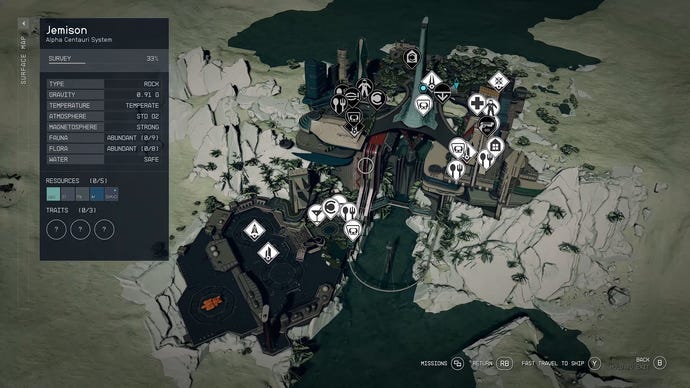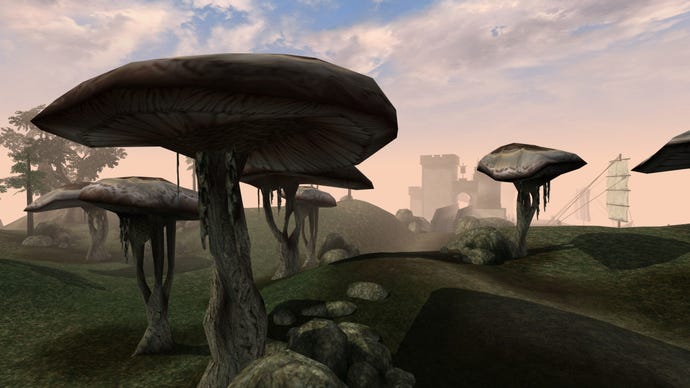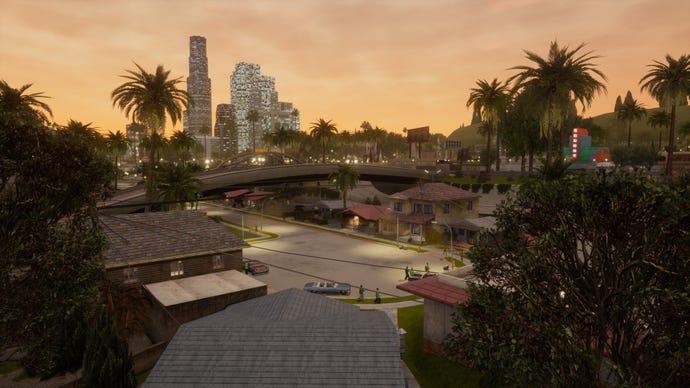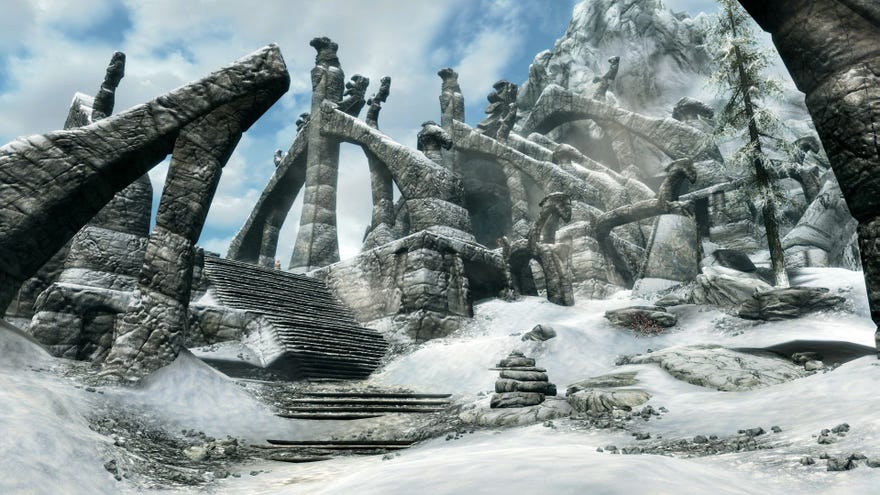How the checklist conquered the open world, from Morrowind to Skyrim
The first in a new interview series about a sprawling, exhausting genre
There's no genre like the open world for inducing choice paralysis, so it's fitting that I've been agonising over how to begin this irregular article series on open world games for months. I have a lot of material, oodles of interviews with developers of all shapes and sizes - big shops like Remedy and CD Projekt, smaller studios like Ace Team and Awaceb, all holding forth on such topics as whether Elden Ring or Zelda did bandit camps better, and how you make a forest feel endless. There is so much you could talk about, so many trails heading off in all directions, but perhaps it's best to begin with the more personal and superficial question that inspired this investigation: how did the open world game get so boring?
I used to love open worlds for, in a nutshell, being virtual environments vast enough to get thoroughly lost in with no guarantee of what I'd find. They were enveloping mysteries, tantalising horizons. Nowadays, however, I regard open worlds as chores, because they are designed so insistently, even desperately, around recurring activities and rewards. Wherever I go, I always feel like I'm walking on the spot. The open world's promise of scale has become its greatest disadvantage, inasmuch as that scale is now justified and structured by a surfeit of smaller, looping acts of content extraction, typically joined at the hip to live service fixtures, which create a momentum for exploration that used to be supplied by curiosity, and which conspire to drain the landscape of grandeur. Open worlds have never been larger in terms of acreage, but they do not spend your time well.
.png?width=690&quality=80&format=jpg&auto=webp)
This is a commonly heard criticism of the genre today, and not just from reviewers who have to write up these enormities for embargo.
"I think a lot of it has to do with the way some open world games are designed, where it is very much that checklist," says Nate Purkeypile, creator of occult hunting sim The Axis Unseen, and a former Fallout and Elder Scrolls designer. His feats include carving out the vast Dwemer undercity of Blackreach in The Elder Scrolls V: Skyrim - a world beneath the world, revealed by the bronze elevators that pock the mountains above. "These games can be a lot of fun, and I've had fun with them, too, but I have that same fatigue," Purkeypile says. Today's open worlds, he suggests, might cast you as explorers, but they don't feel like places you discover. "That feeling of not really knowing what's over there and feeling surprised - you don't really feel like you're exploring the world, if you're not actually surprised."
As to why open worlds have lost that element of surprise, Purkeypile points straightforwardly to how expensive today's biggest games are to make, and the number of people involved in their creation. There has never been greater pressure to standardise the format and mitigate the risk of a flop. And the larger the team, the harder it is to set aside time for exploration within the complex geography of video game development.
"When you have literally thousands of people working on the game, sometimes you need to be able to have these bite-sized portions of 'do this, go there'," Purkeypile says. "It's very hard to run things at that scale without all those checks and balances and stuff."
Purkeypile contrasts this with his memories of working on Skyrim, back in the noughties.
"We were like 100 people back then, and there were lots of trust in the team, where you could just take something and make it your own. Like Blackreach - that was not on the schedule at all. We did it as a skunkworks project on the side, and people saw it and said, oh, that's really awesome - I guess we should keep it. And I have people, to this day, say it's one of their favourite things, because they go into that deep, dark dungeon to find something we never tell you about. It's like, vaguely hinted at, but it's a surprise."
Purkeypile left Bethesda partly because there was less opportunity for such trips into the undergrowth during development of Starfield, which Alice B (RPS in peace) pithily summarised as being so big it feels small.
"Starfield was like 500-ish people across four studios," Purkeypile says. "I think there is still a lot of individual storytelling there, within spaces, and cool places to find, but it is definitely harder at that scale."

ZeniMax Online president and Elder Scrolls Online director Matt Firor expands the point by noting that the audience for games nowadays has less patience for the sensation of feeling lost. He holds up Skyrim's grandmarm The Elder Scrolls 3: Morrowind as an example of open world design that is no longer a practical possibility for a developer like Bethesda. The wonky fungal island of Morrowind now plays like the antidote to the concise quest templates and heavy HUD hand-holding of later open worlders. It's an obscure and formless landscape where the geography must be actively navigated based on scraps of information, with no baked-in Google Maps-style functionality to breadcrumb you to an objective, and players are free to go thrillingly astray.
"If you play that right now - there is no compass, no map, literally the quests are like 'go to the third tree on the right and walk 50 paces west'," Firor says. "And if you did that now, no one would play it. Very few people would play it. So now you need to give them hints and clues, and because nobody wants to really devote that much time to problem solving. Like they want to go and be told the story, or enter or interact with another player, or interact with an NPC.
"Morrowind is a great game obviously," he goes on. "It's one of my favourite games. But the way it told its story with the open world is a little out of date for the type of gamers that we have now, where they're not all hardcore, they're not all PC or generation-one console diehards, right, who are going to go out and invest as much time in the game as possible. Now [that there are] so many other options for players, you really want to make sure that it's engaging and fun, and wandering around a field trying to gauge 50 steps from a tree is not part of that anymore. Which is kind of sad, because I'm old school."

"[We now] have to support both those kind of hardcore players - I'm saying hardcore, that term is loaded - but the people that really want to take the time and live everything and make it difficult, and then the wider audience that really just has 20 minutes to burn," Firor adds. You can see this balancing act in the forthcoming Assassin's Creed Shadows, which opts for a looser quest format where players can narrow down the vicinity of a target by eavesdropping on NPCs.
One reason to preserve that touch of Morrowindy ambiguity is simply that developers love seeing players embroiled in the act of actually working something out, tracking something down. This is, Firor suggests, the fundamental appeal of devising an open world game, the emphasis that differentiates it from other genres.
"It's make a space and then just populate it with things to do, and the players can do it in any order. And sometimes it's a little chaotic. And sometimes you can't figure out what the players are going to figure out, because they're smarter than you. But that's what the world is like too. And it's so much fun, just to create space and let players into it, and then see what they do."
I'm hoping to take a similar approach with this article series: make a space, and see what you all do within it, which overgrown paths you lead me down. Partly, this is a gesture of armchair designer resistance towards one of the fundamentals of open world design, the tendency to have that world turn on the movements of a single agent. But also, as Firor says, it's just fun. I'm hoping that you'll join me on this trek, and give me some headings.
I have some thoughts about topics we could address next, plucked from my pot of interview materials. There's the impact of changing technology, such as the extension of draw distances from hardware generation to generation, and of monetisation models such as free-to-play. There's the fact that so many open worlders are fantasies of conquest, continuations of the frontier daydreams of North American and European imperialism - and by extension, the question of how the genre appears to people who reside in places where these colonial associations might speak to a lived reality.

We could explore the more famous open world landmarks, such as the infamous towers of Assassin's Creed, which began life as a means of narrowing the divide between player and designer. We could devote pieces to individual games - not just yer Skyrims and yer Grand Theft Autos, but lesser-known, discreetly influential oddities such as The Abbey Of Crime, or mods such as Brookheights, an unofficial open world expansion of The Sims. We could investigate open world memes, like the urban legends that haunt San Andreas. And bubbling beneath all that, a cauldron of more diffuse thoughts about the philosophy or poetics of open worlding. How should you aestheticise size and open-endedness for their own sake? How do you characterise the player of an open world game - invader, explorer, wanderer, vagrant, collector, saviour, trespasser, woman, man or none of the above? What even is a "world", anyway, and what really distinguishes an open world from a closed one?

